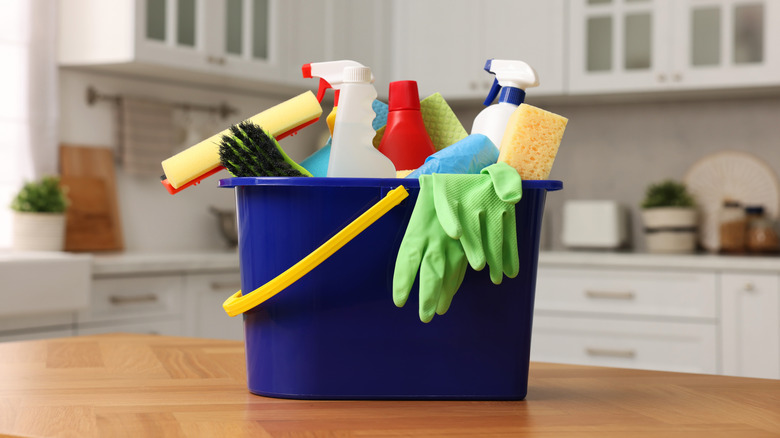This Is The Dirtiest Place In Your Kitchen According To Science
There's no denying the importance of having a kitchen that's neat and clean. After all, as the common adage goes, you are what you eat. And if your kitchen isn't clean, some of that dirt and bacteria may find their way onto your plates, so it's best to scrub and wipe it all away. But while the typical cleaning list includes appliances and countertops, several overlooked areas of the kitchen hide a wealth of bacteria. In fact, one of the dirtiest spots in the room is in plain sight — your light switches.
There are many reasons light switches can turn into hotbeds for bacteria. For starters, they are often touched with unclean hands. Think back to when you may have sliced raw meat and then, without washing your hands, turned on the switch for the oven light. Or when you turned on a light switch while pulling out unwashed veggies — potentially packed with pesticides and bacteria — from the shopping bags.
You may not notice it, but every time you touch a switch with unclean hands, you transfer microorganisms onto the switch. These germs (especially pathogens like salmonella and E. coli) linger on the switches unless they are cleaned. Moreover, bacteria thrive in warm temperatures and environments that are moist and humid — and kitchens, as well as its switches, provide the perfect conditions for bacteria to multiply. To make matters worse, these switches are often touched by various family members throughout the day, multiplying the risk of cross-contamination and creating a stronghold of bacteria that often goes unnoticed.
Tips to clean your kitchen switches
It's a good idea to clean your kitchen switches once every week, but there are some things to keep in mind before you get on with it. Cleaning switches can be a little tricky because there's electricity involved. So, it's best to approach with caution and switch off the main power connection before you begin. From there, cleaning switches is a fairly straightforward task that doesn't require too many tools. You can either opt for a store-bought disinfectant or make one at home by mixing equal ratios of white vinegar and water. Spray your chosen cleaning solution onto a clean cloth and wipe away, but be careful not to overdo it — you don't want the liquid to penetrate inside the electric switches. Dry it off with another towel after, and your switches should be bacteria-free.
Another option is to use a paste of baking soda and water. However, there is a catch when it comes to DIY solutions. Killing bacteria requires a disinfectant (not just a simple cleaning agent), and baking soda's disinfecting properties are not proven, meaning it might not be as effective for your switches as store-bought options. White vinegar, too, has limited disinfecting properties, but it can tackle E. coli, salmonella, and listeria, which are some of the most common bacteria responsible for food-related contamination and illnesses. This means that you can use white vinegar in a pinch, but it might be worth investing in a commercial disinfectant to truly ensure your light switches are bacteria-free.

